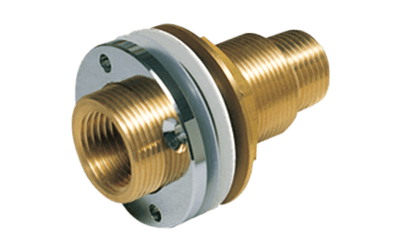What Is a Threaded Coupling?

Threaded coupling, known in various terms like threaded joint, screw joint, or screwed fitting, is a type of pipe fitting employed to connect pipes for various purposes such as changing fluid direction, branching, connecting different diameters, closing pipe ends, installing devices, and compensating for movement. It is one of the four main types of pipe joints, alongside welded, flanged, and ferrule joints.
Uses of Threaded Couplings
Threaded couplings are cost-effective solutions for joining pipes without special tools, applicable in power generation, chemical plants, buildings, and homes. They are particularly suited for low-pressure fluid piping.
Principle of Threaded Couplings
Threaded couplings, designed with either parallel or tapered pipe threads, facilitate direct fastening into tapped holes. These threads, detailed in standards like ISO 228-1 and ANSI/ASME B1.20.1, ensure secure connections. The choice between parallel and tapered threads depends on the application and sealing requirements.
Types of Threaded Couplings
Threaded couplings vary in shape and purpose, including elbows, tees, crosses, sockets, bushings, nipples, caps, plugs, and unions. Each type serves specific functions in piping systems, from changing directions to branching and closing paths.
Other Information on Threaded Couplings
Threaded couplings are governed by standards such as ANSI/ASME B16.1, covering specifications, materials, and applications. Materials range from stainless steel to malleable iron, with surface treatments like galvanizing or epoxy coating to enhance corrosion resistance.